Hyundai's future is going to look like a chess set, and with everything from rook and bishop to knight and king, it'll all be tied together.
That's according to Hyundai design boss, Simon Loasby. The Korean automaker's vice president of design sat down with Green Car Reports at the 2021 LA auto show to discuss the automaker's future design language and technology along with how it all plays together.
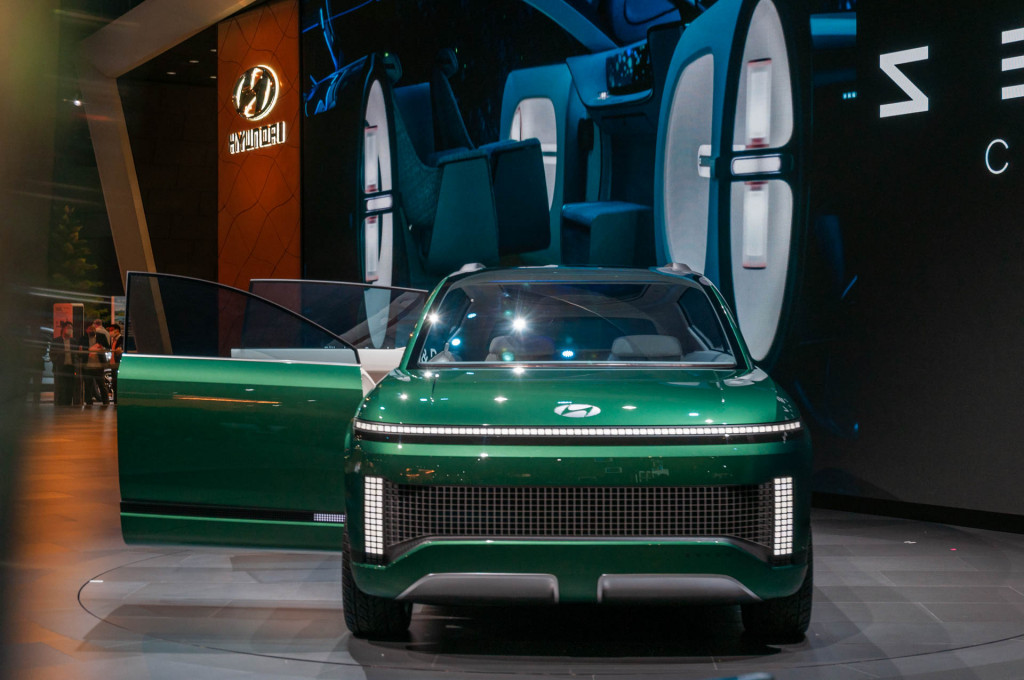
Hyundai Seven concept
The Pixel
The Seven concept that Hyundai debuted at the LA auto show looks nothing like the 2022 Ioniq 5 that will arrive in the U.S. in December, but yet it's clearly related. Same story with the upcoming Ioniq 6, which was previewed by the Prophecy concept. That's on purpose, according to Loasby.
The Ioniq lineup, part of Hyundai's upcoming sub-brand of electric vehicles, will be tied together and distinguished by its pixel lighting design. "Whenever you see a pixel, you don't have to see the rest of the car. You know it's an Ioniq. It's a Hyundai, because only we do that," Loasby said while we were seated on the couch-like wrap-around back seat inside the Seven concept.
The best way to describe the future Hyundai Ioniq lineup is like that chess set, according to Loasby. The pieces all look different from each other, and they move differently than one another, but they all play chess. The basis of the pieces of these vehicles, is the same, but they are used differently. They are all on the same team, or in this case, the same brand, as there's something that ties them together. That's the pixel design theme.
The pixel's origin is actually from a 600-year-old language, according to Loasby. The Hangul language, the alphabet in Korea, looks different than any other language because King Sejong took the script and democratized it to make it set of 23 letters. One of those letters is a perfect pixel.
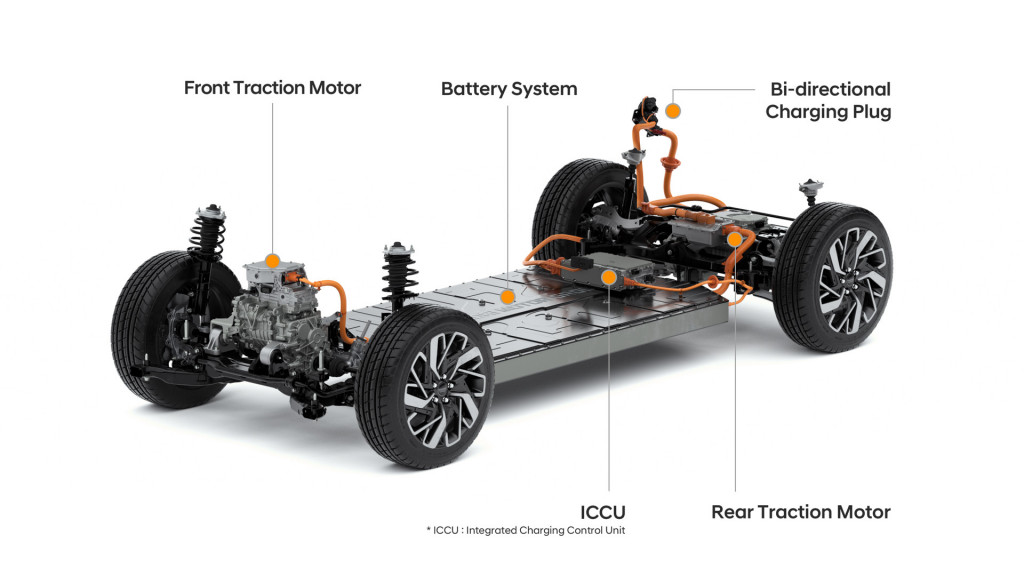
Hyundai Motor Group E-GMP platform
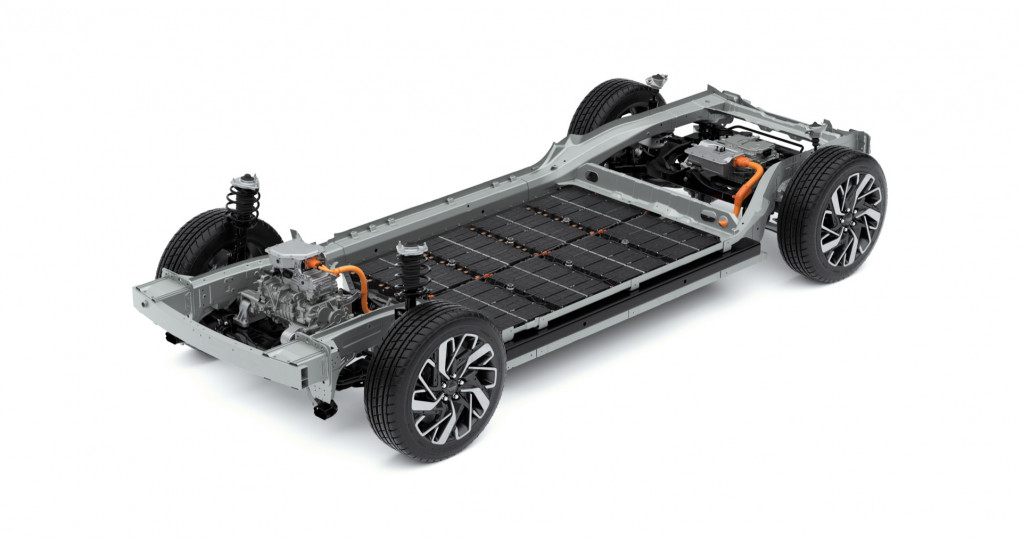
Hyundai Motor Group E-GMP platform
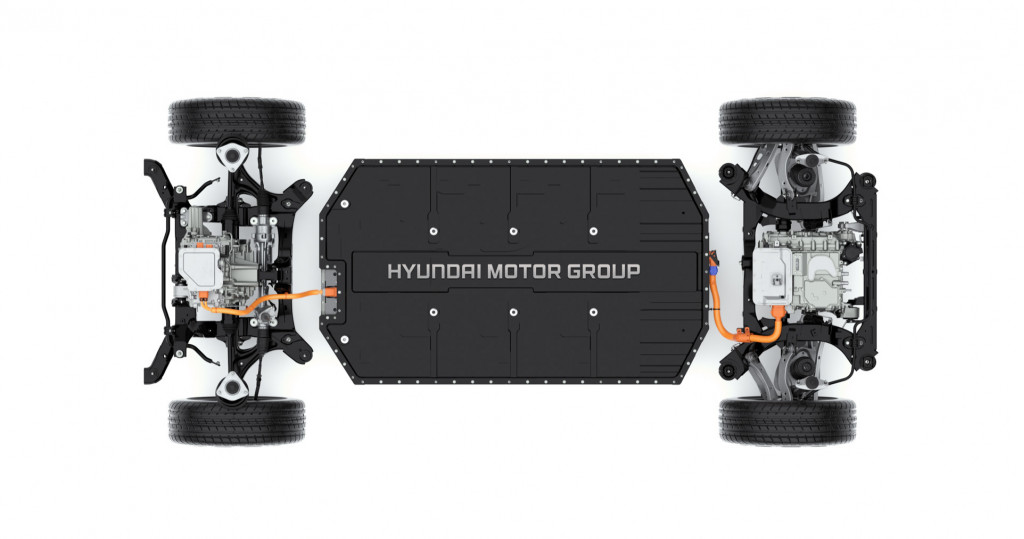
Hyundai Motor Group E-GMP platform
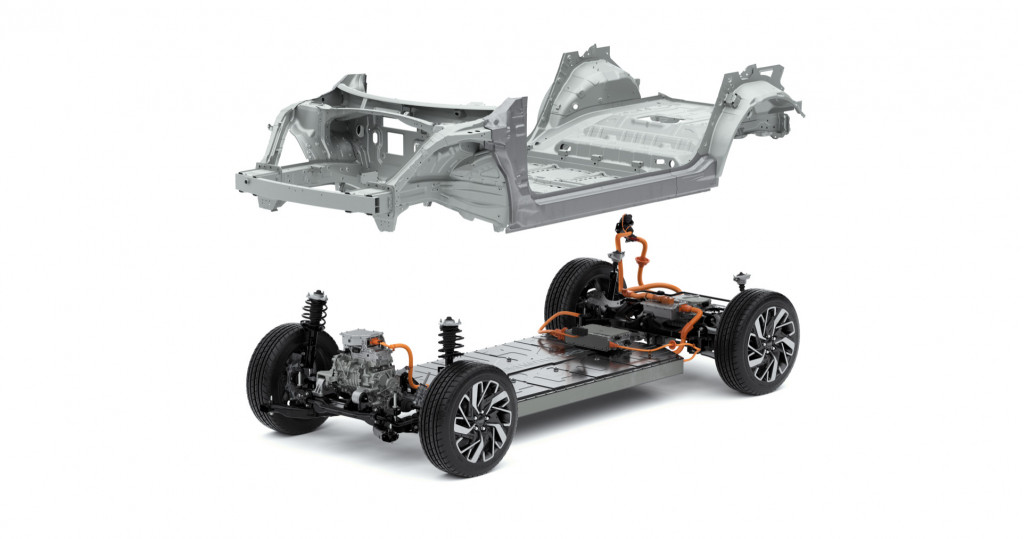
Hyundai Motor Group E-GMP platform
The basis, or architecture Loasby referenced is Hyundai Group's E-GMP platform, which will serve as the basis for Hyundai, Kia, and Genesis' future. It already underpins the upcoming Hyundai Ioniq 5, Kia EV6, and Genesis GV60. It'll also underpin Hyundai's Ioniq 6, Ioniq 7, Kia EV9, and other Genesis models. The E-GMP platform is one to keep an eye on as it has 800-volt hardware enabling it to regain 62 miles in as little as 5 minutes
While some automakers, like Mercedes-Benz, are taking the one sausage, different size approach, Loasby said that idea forces people to fit the vehicle and brand. Hyundai's plan is to focus on use-case scenarios for each forthcoming vehicle rather than forcing each vehicle to look the same with similar shapes.
Beyond the pixel, there will be subtle design cues that tie the Ioniq lineup together, but it'll take a sharp eye and in some ways, creative thinking. On the side of the Ioniq 5 there's a very sharp diagonal crease. That diagonal crease will make appearances in other Ioniq models, but it won't be used in the same way. On the Seven concept, it sits in the middle of the rear doors leading into the blistered rear fenders.
"I call it the Hanbok line," Loasby said as he made a straight slash in the air. In Korea, on traditional outfits, or traditional dresses, this is called the Hanbok, and it has a collar with a single diagonal line, as seen in the Ioniq 5 and now Seven concept. It's a little, but very modern, somehow distinctly Korean, touch that doesn't look old or retro, and Loasby is quite proud of its integration.
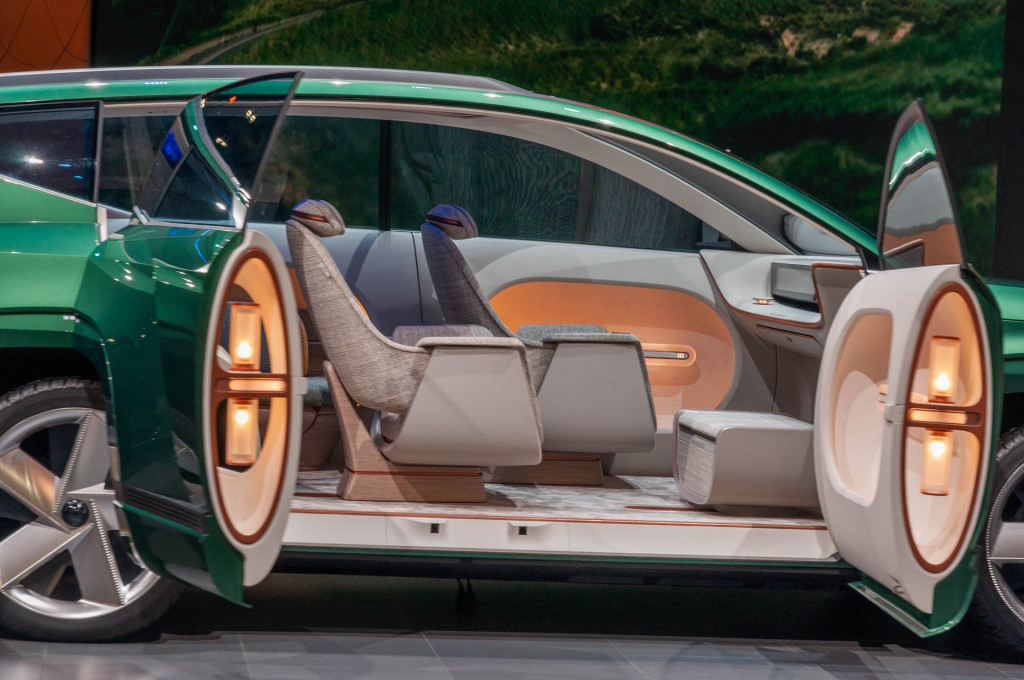
Hyundai Seven concept
Hygiene is the future
The Seven concept puts a large focus on hygiene, which makes sense in these Covid-19 times, but Loasby said that the tech, and hygienic focus in the Seven, isn't some pie-in-the-sky concept stuff. It's coming to future production models.
Korea's capital, Seoul, where Hyundai's headquarters is located, never had a lockdown or massive shutdown during Covid. "Hygiene is something which they're really good at," Loasby said, and it's something the future depends on.

Hyundai Seven concept
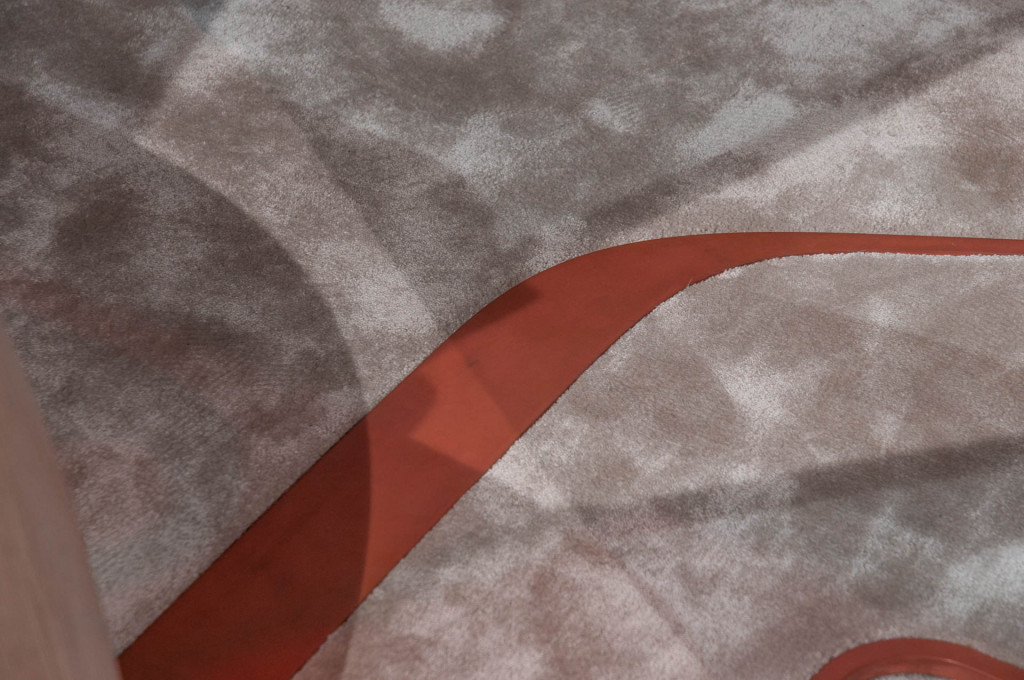
Hyundai Seven concept

Hyundai Seven concept
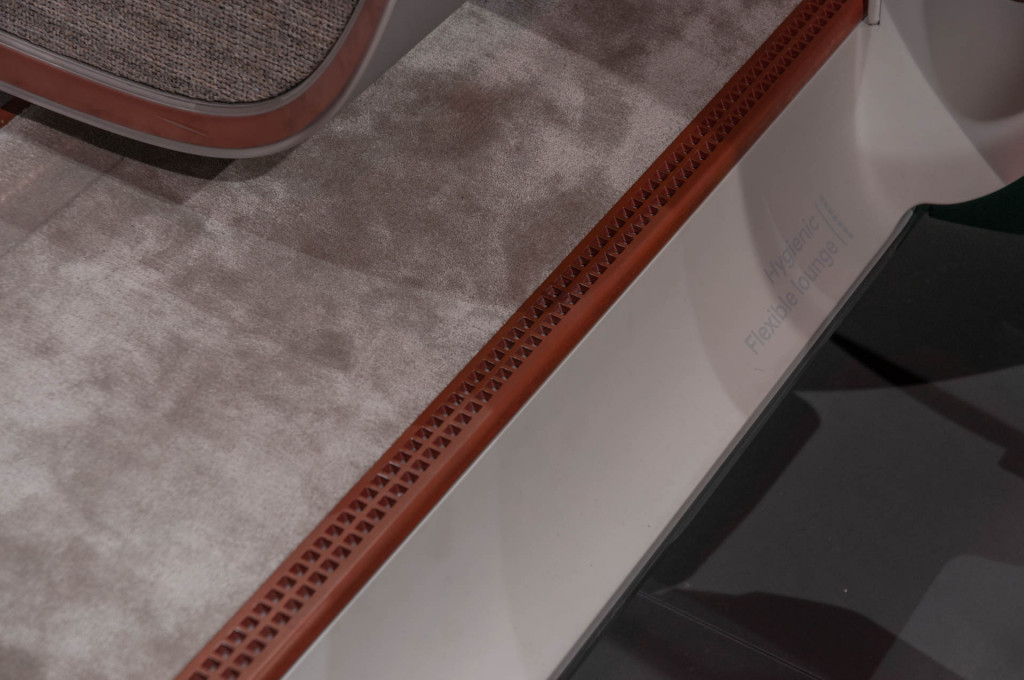
Hyundai Seven concept
The Seven concept has a "hygiene mode" that sterilizes the interior when you leave the car. All the lighting goes to UVC to kill viruses and bacteria, so the car can be setup to clean itself. The interior has two separate ventilation units that make it so the front seat occupants never breath the same air as those seated in the rear. The system is designed similarly to what one will find in an airplane with a thin vent emitting air from the dashboard up front or from the ceiling in the rear to cascade over the passengers. Vents around the base of the vehicle's floor suck the air out of the cabin similar to an air return in a home. "We benchmarked an aircraft for this system, because that's actually a really clean environment because you recycle the air," Loasby said.
The trim inside the Seven concept is made of copper, which itself is a virus inhibiting, bacteria inhibiting material. Hyundai's working with copper and pushing the engineers to see what's feasible for production. "You can weave copper into fabric. You can weave copper into recycled PET bottle fabric," Loasby said. And while copper's not cheap, today, it doesn't take much, especially if it's hidden or used sparingly.
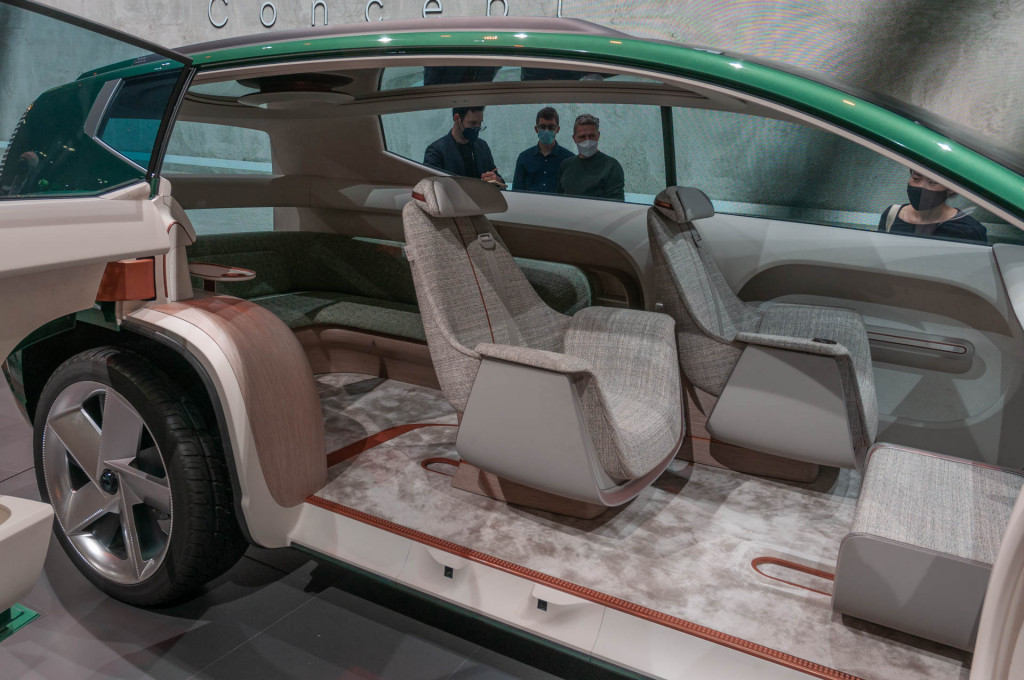
Hyundai Seven concept
Configuration and sustainable materials
It's clear the interior of the Seven concept is conceptual. It was designed around Level 4 self-driving capabilities, which do no exist in production today. But, the flexible, reconfigurable interior? Loasby said something like that could be designed in the future and meet crash testing standards.
A reconfigurable interior could dramatically change how people use the space in their vehicles. Karim Habib, senior vice president and head of Kia's design center, told GCR that an electric vehicle without a b-pillar is possible, and it could be designed to pass crash tests. The enabler? EV platforms. Having the strength of the battery in the base of the vehicle with the center of mass centralized and a strong frame could enable a new, modern vehicle to be designed without a b-pillar, a feat that hasn't been common in decades due to modern crash tests and safety standards.
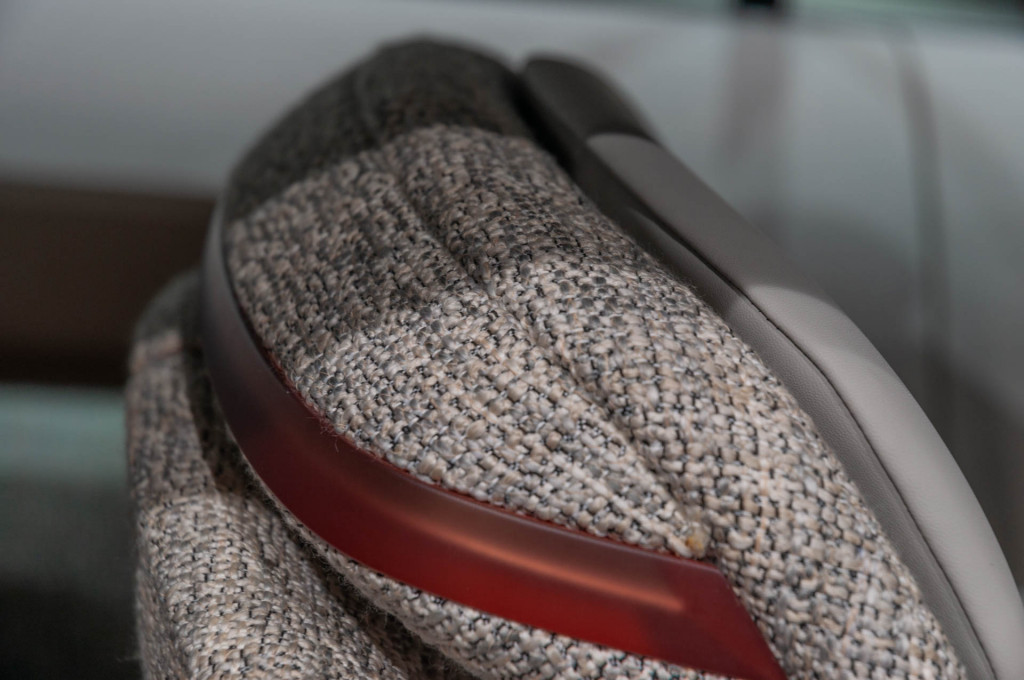
Hyundai Seven concept
While customers still view top models as having leather, it's a trend that needs to, and will, change, according to Loasby. "We would like to change that because wool is so sustainable." The Seven concept features seats upholstered in boucle wool and features some copper weave embedded within the fibers. "Nobody's saying, "Oh, that doesn't look high level." Everybody's like, "Wow, this can work," Loasby said excitedly. The carpet in the Seven concept is silk bamboo while the wood trim is bamboo; both are sustainable and look high end as if they belong in a luxury vehicle
The future's electric, that much is clear. Loasby sees the transition taking place rapidly over the next decade. Hyundai's planted its flag in terms of design and it's in the form of a pixel. Distinct, attractive, and cool in a retro yet futuristic way.
But it was a question the executive posed to me during our discussion that really had me thinking as I walked away from the Hyundai booth and for days later, "Are you willing to pay to be sustainable? This is an important point," Loasby added.
Although Hyundai hasn't revealed much yet about its pricing plan for Ioniq models yet, and there will be plenty of other reasons they'll stand out, we'll soon learn more about the company's opening moves.













